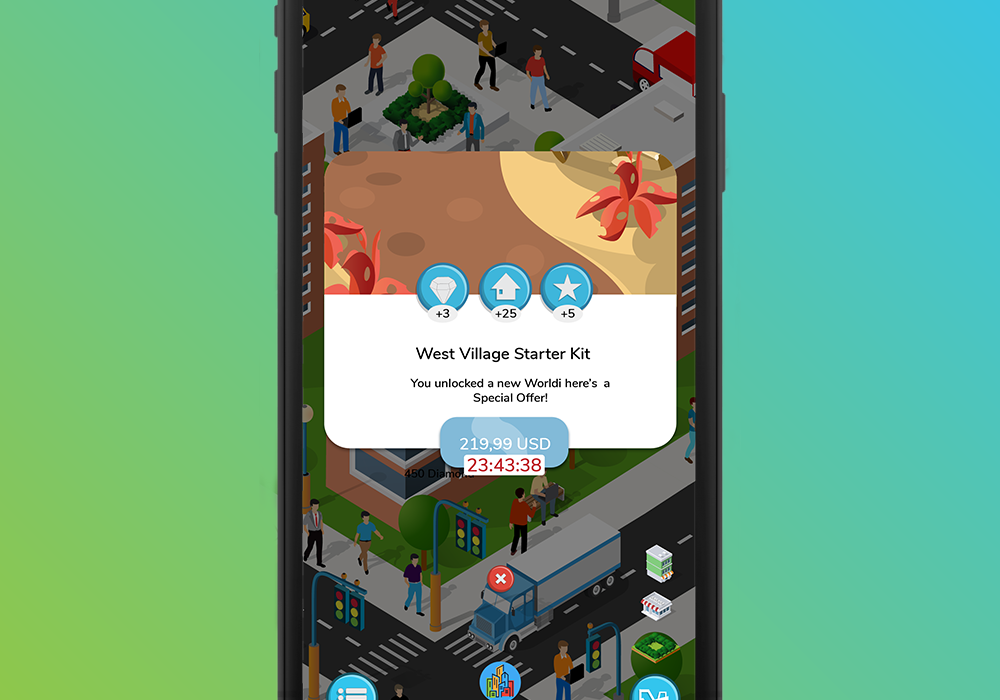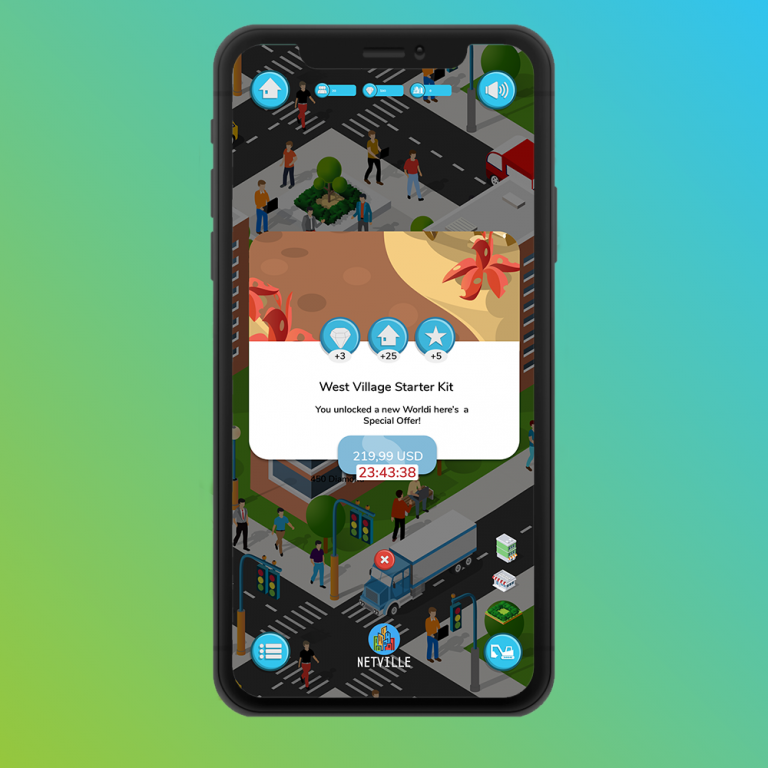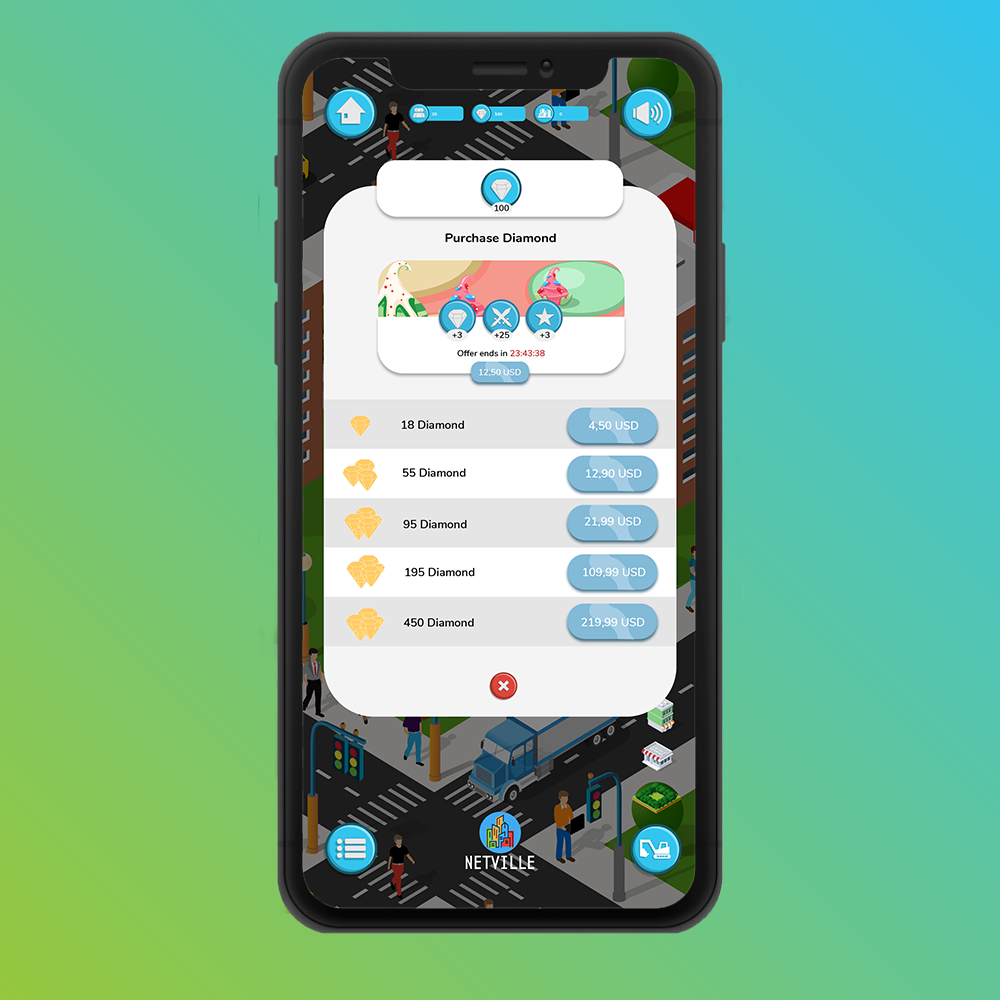
Netmera Gaming Product Diaries #2: LiveOps
Monetize your mobile game with flexible LiveOps strategies
Previously, on Netmera Gaming Product Diaries #1, we have mentioned how you can take advantage of Netmera’s engagement & analytics platform for your mobile games in general. Today, we’ll go deeper and explore LiveOps, a relatively new concept in-game marketing, and see how you can turn it into a monetization strategy for your games. Let’s get started.
What is LiveOps and how does it work?
The dynamics started to change a lot in the game industry, where the real work starts after launching the game and you have to make the players happy every day.
The concept of “live ops”, which you probably did not even hear about a few years ago in the mobile game industry, is now one of the indispensables of game companies.
LiveOps, the abbreviation for live operations, refers to any changes, updates, or improvements made to a game without the need to release a brand-new version of that game.
But, why was it needed in the first place? In the past, game developers were doing enough backend development to make the game work, but previously, in the last 1-2 years, this situation has changed drastically. One of the biggest reasons for this is that game developers want to make changes to the game remotely without requiring a new version as much as possible.
Let’s think about a mobile game that you’ve downloaded. You won’t like to enter the game every day and see a new update has been added and that you need to update your game before playing it.
There are two main reasons for such a need:
First, especially on the App Store side, the application review processes sometimes take a very long time and unexpected feedback from Apple.
Game developers are trying to bring new features and content to the players very quickly, but it is not easy to do this on the Apple side.
This is one of the reasons why game developers are concerned about sending new content and features to the players as much as possible by the server. Thus, players can access these contents without the need for a new version.
Secondly, each new update carries the risk of losing existing players – especially in live games with multiplayer features, players must all play the game using the same version. Because all players must benefit from the new features and changes made at the same time. This causes you to lose some existing players.
The idea that you release a new version of the application, send it to Apple and Google Play, let them approve the application, and then let my players meet with these innovations is against the concept of LiveOps. Let’s face it, it’s exhausting and sounds inhuman. That is why we have met the concept of LiveOps, in the simplest terms.
Today, we can collect the concept of LiveOps under 4 headings:
Bundles and Sales
Limited Time Events
Remote Game Configuration Changes
A/B Testing
Now let’s explore these crucial concepts of LiveOps in detail.
Bundles & Sales
No matter which mobile game you open and look at right now, you will definitely see packages with different content. These packages, which are usually sold below the normal price, are one of the techniques that will allow players to spend money.
All package offers are prepared in a way that will attract players both visually and in terms of benefits. Games that make these offers at the right time and place can seriously increase their revenue.

So where are the LiveOps in this?
Almost all of the components you see in the offers can be changed remotely. In other words, everything is dynamic. Image, title, text, prices, remaining time… In short, all elements in the widgets can be changed remotely.
But – do all players see the same offers?
This is where segmentation comes into play. One of the basic principles of marketing, showing the right offer to the right person, at the right place and time is also valid for mobile games. Almost all of the offers in successful mobile games are prepared with different content and pricing for different segments.
The content and pricing of the offers that will be seen by a player who has just started the game and the offers that the player will see after 30 days should be different. That’s why your LiveOps strategy should be supported by a strong segmentation infrastructure.
Note that Netmera’s powerful segmentation tools help you identify, define, and target your players with various attributes, including traits, behaviors, in-game preferences, and more. You can create unified player profiles for more direct, consistent, and individualized communication.
Limited Time Events
Limited Time Events are one of the most important ways for game developers to increase revenue and loyalty.
The purpose of these events, in which players are given tasks that are not normally done and must be completed in a limited time, are to offer different content to the players, to enable them to enter the game more often, and to maximize app purchases.
All of these activities are followed on an almost hourly basis by product managers and these activities can be intervened when necessary. For example, the product manager, who sees that the players have too much difficulty during the event and cannot progress in the event, can change the difficulty level of the event remotely.

Segmentation, which we mentioned in the previous title, also applies to limited-term events. While offering more difficult but more satisfying activities as rewards to high-level players, game developers can offer less difficult and less rewarding activities to new players. Thus, player engagement can be increased in each segment when these activities are maximized.
Remote Game Configuration Changes
Product managers review a wide variety of game data at daily or even hourly intervals. Data such as the economy of the game (whether there is inflation in the game), and how fast the players progress in the game are from the reports that the product managers constantly follow.
Let’s say the product manager looks at the “Player Level Breakdown 30 days-Cohort” chart, which shows how fast players are progressing in the game.
With the Cohort report, the product manager can look at the level distribution of these players, especially for players who started playing the game 30 days ago. Let’s say there is a serious drop between Level 5 and Level 6. There may be several reasons for this:
The amount of experience points required to level up in the game is increasing drastically and players do not see it as a very achievable goal.
To solve this situation, product managers can remotely adjust experience point amounts with the help of LiveOps. Thus, the situation can be intervened very quickly.
Players may be complaining that the game is starting to repeat itself too much. In other words, not enough new content or gameplay can be offered to the players.
A very advanced LiveOps infrastructure is needed to solve this situation.
But, a repeating game can decrease player engagement and conclude in low revenue. Obviously, adding new content to the game remotely is not an easy task. An advanced content management system is needed.
As a result of increasing in-game costs, players may be experiencing serious resource shortages. For example, they don’t have enough gold to upgrade their characters.
In order to solve this situation, the prices in the game can be reduced or the amount of gold that players can earn at Level 5 can be increased. Thus, the method of monetizing the players at later levels can be preferred by giving the players a little more breath.

In the past, it was necessary to update the application to be able to make such changes, but now almost all of the applications that make serious income can make these changes remotely.
A/B Testing
A/B tests are always a method used to test the features, gameplay and pricing in the game. Product managers generally try to do as much A/B testing as possible on the following topics;
Pricing Tests: What should be the value of a character to be added to the game, 100 gold or 300 gold?
Difficulty Tests: How fast will players progress through the game? Can the average player reach Level 10 after Day 7?
FTUE Tests (First Time User Experience – Mini-guide that teaches the player the game when the game first starts): Should the FTUE be long (ie, let’s teach the player everything) or short (let’s teach only certain things)?
Let’s say the product manager wants to run a pricing test. A new character will be added to the game, and the question is, what should the price be? The product manager must have a cost in mind. It usually does this by looking at how much better or worse the character to be added is compared to other characters in the game.
So far, everything is normal and you might say, why do we need A/B testing in this situation? There is no need to do such a test for casual games with low active users. Because the marginal benefit or optimization you will receive will be between 1-5%. It’s highly likely that you can get more benefits by spending the time you spend on A/B testing elsewhere.
On the other hand, for a game with millions of daily active users, a 1-5% benefit increase will reflect more positively on the result. That’s why A/B testing is one of the methods product managers use when adding new content and pricing.
After about a few days of testing, the product manager looks at which group does better in terms of revenue and loyalty and applies that group to all the players. A 1% income or expenditure increase that can be obtained as a result of this process can have very serious results in games where the number of daily active users reaches millions.
Do not skip the integration
One of the biggest mistakes game developers make is to leave this type of LiveOps development until after the launch of the game. If you have a small budget, of course, these are the issues you should focus on after the launch, but if you have big goals, it is very important to think about this type of live ops development from the beginning and to set up the technical infrastructure accordingly.
Final Thoughts
In summary, LiveOps strategies appear as an indispensable strategy for your mobile game to constantly offer new content to players, support this content with the right package and discount campaigns, and make the game more enjoyable for players.
As long as you pay enough attention to the LiveOps strategies we’ve mentioned, there is no reason not to grow your game and generate income.
